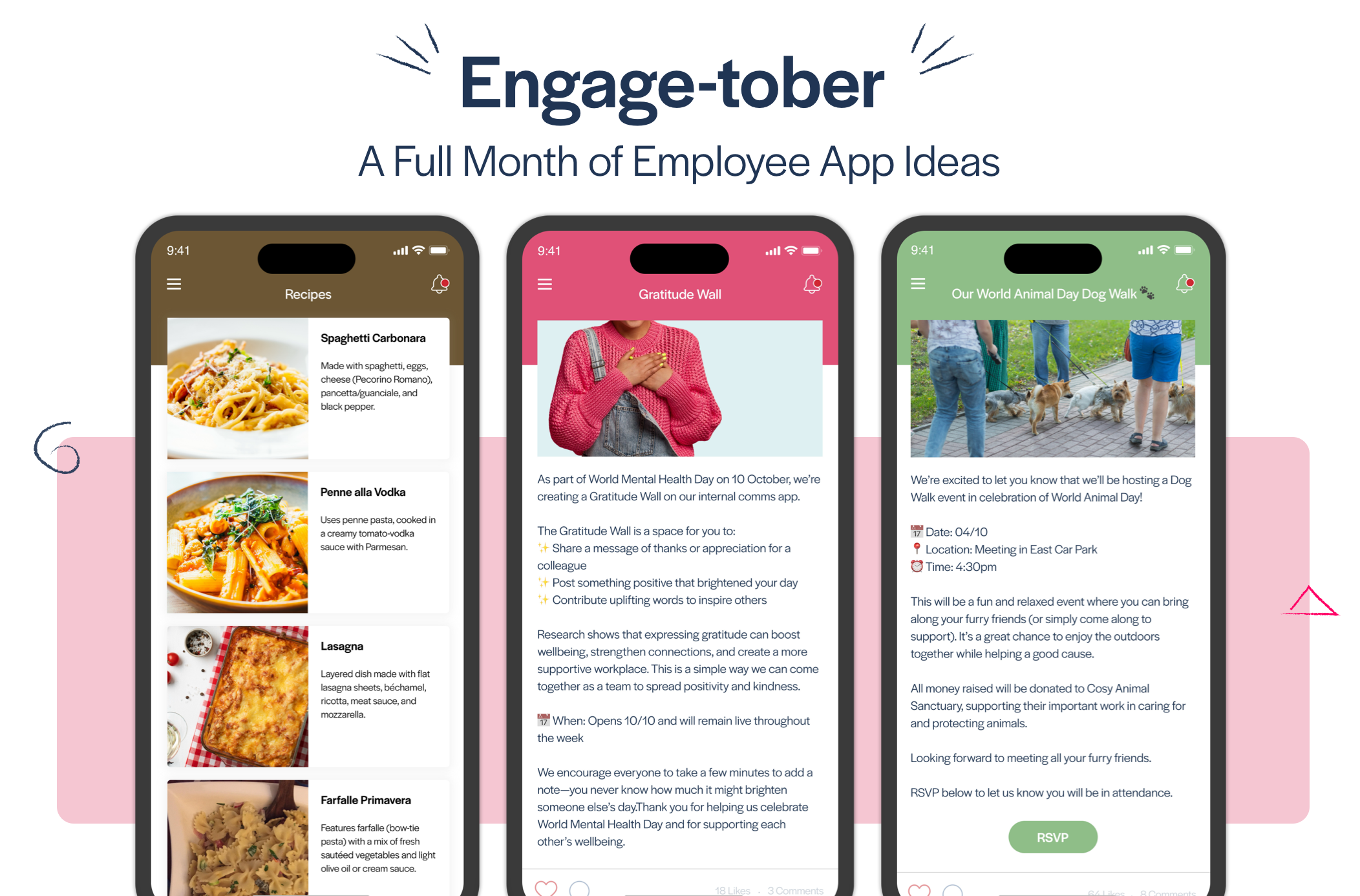
Blog
Borrow These Employee Engagement Practices from the Logistics Sector
When it comes to employee engagement, every industry can learn from the logistics sector. Try these solutions to connect and engage your dispersed workforce.

The pandemic created an unprecedented employee experience for many industries: that of a workforce that was suddenly dispersed, remote, and disconnected. But for those in logistics, this type of working environment was already the norm. Employees in logistics, storage and distribution are used to performing their essential functions from warehouses, lorries, and even while on the road.
What’s more, the logistics industry boomed during a time when many businesses struggled to know how to continue operations during lockdown. In fact, logistics saw the biggest demand for staffing during the pandemic, on top of existing challenges like supply chain disruptions, ongoing worker shortages, Brexit impacts, and increased volume.
COVID-19 compounded and magnified these pressures, causing much scrutiny of the industry (both internally and externally) that has started to compel major change with regards to everything from processes to employee engagement.
Prioritising Employee Engagement in 2021
Employee engagement is all about bringing together how satisfied and happy employees are at work with how productive they are. But with so many changes occurring in the workplace that started last year and have continued well into 2021, it can be difficult to bring those two metrics into alignment.
However, 55% of businesses are planning to make it a priority in 2021. With 44% of employees reporting that they don’t feel connected to their peers because 50% aren’t working in their usual environment, it’s time for industries to see what they can borrow from an industry familiar with spread-out employees: the logistics industry.
Four Things Other Industries Can Learn From Logistics Companies About Engagement, Communication & Connection
#1 Improve emphasis on health & well-being
Increased stress (physical, mental and emotional) and a heavy workload can decrease motivation and increase health-related issues. And given that the logistics industry suffers from high turnover, it was imperative that they make necessary adjustments to safeguard the health and well-being of employees.
A post from the University of Manchester addressed the need for looking after the physical and mental health of the transport and logistics workforce, for whom the average age is 57 and health is below average.
What to try in your industry:
- Ensure that employees who are isolated from colleagues due to a remote work situation have robust ways to communicate with others and to receive work-related information and communication.
- Provide means for discussions to occur that are about personal needs relative to the job and otherwise, not just about operational and performance-related issues.
- Make sure that managers and others in leadership roles are listening to what employees are reporting about their mental and physical health needs, and that they’re able to gather that feedback in a way that makes it actionable.
- Provide digital guides full of resources that help employees manage their well-being.
#2 Prioritise safety
Because the logistics sector already feels the pains of high costs due to worker injuries and the resulting costs declines in productivity, establishing world-class safety practices is a definite priority. But this need doesn’t stop at the logistics sector. COVID-19 and its variants have required that all workplaces create greater urgency around safety.
What to try in your industry:
- Establish clear safety guidelines in the workplace and make sure they’re accessible by every employee everywhere on any device.
- Target safety news to specific employees, roles and locations by using a communications app. Not all safety requirements or recommendations will be appropriate for every job function.
#3 Empower employees with technology & development
A shift to a goal- and personal development-oriented culture — versus a strictly operational one — is another adjustment being made across many logistics companies. That’s because training and learning opportunities help employees feel valued and make them want to stick around.
Likewise, empowering employees to not just take charge of their career path, but to have more control over self-managing their everyday roles using technology and make certain decisions shows them they are trusted.
What to try in your industry:
- Show employees they are valued by making investments in technology, microlearning and training that fit their roles and actually promote growth (versus requiring them to figure out how to fit in required training).
- Invest in technology (such as an employee app) that allows employees to access everything from company policies and benefits information to shift schedules.
- Give them the ability to change shifts, view schedules, book holidays and more using their mobile devices.
- Provide career and personal development opportunities that can be accessed from mobile devices during times that are convenient for the employees.
#4 Create an uplifting culture
All of the above — prioritising health and safety, along with empowering employees — goes into the development of a strong company culture. But there are a few more steps that we’re seeing in the logistics sector that can be taken by industry leaders everywhere to generate a positive culture.
Implement measures that reinforce the importance of every individual employee’s skills, experience and perspectives to solving the big issues and challenges to raise the collective morale.
What to try in your industry:
- Facilitate positive feedback channels that employees can use to give each other kudos.
- Celebrate success and achievements large and small and across teams and departments to help unify your workforce.
- Survey employees to learn what sorts of rewards will most motivate them: For example, more benefits or a pay rise? Better work/life balance or a pay rise?
Next Steps…
You’d be amazed at how well an employee app can help you unify and engage your employees, no matter what industry you’re in.
Watch this video of Derry Group Ireland's employee app success story.
If you like what you see, talk to us to find out how Thrive can support your efforts to promote health initiatives, create a strong culture within your organisation, provide personalised safety and training information, and more.









